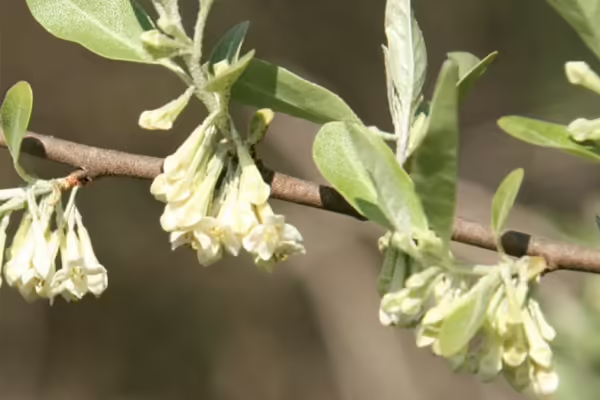
Some plants quietly—yet quickly—invade and overtake our landscapes, pushing out natives and offering no benefits to people, wildlife, or the environment. Luckily, Fall is an ideal time to identify and manage many of the invasive plants in our timber, prairie areas, and landscapes.
Without intervention, invasive species can and will drastically change the natural landscape. “These plants are classified as invasive species because they are not natives of the area and have distributive growth habits. They establish easily and displace native plants in our landscape without providing the same benefits to nature,” says Jay Solomon, Natural Resource, Environment, and Energy Educator. “For example, bush honeysuckle can take over the understory of a forest area, preventing tree seedlings from establishing, reducing safe and suitable nesting locations for songbirds, and the berries provide a lower nutrition level for these birds. The only winner is bush honeysuckle.”
Woody invasive plants such as autumn olive, buckthorn, bush honeysuckle, and multiflora rose can be easily identified and managed during the Fall, giving us the opportunity to allow natives to thrive when Spring arrives. “Woody invasive plant species tend to be the last to go dormant in the winter,” Solomon continues. “Leaving the green plants in an otherwise dormant landscape, it is easy to pick out. They are building up nutrient stores in the roots, which makes them more vulnerable to control measures.”
Forest Preserves of Winnebago County and University of Illinois Extension are partnering to teach individuals how to stop woody invasives in their tracks, allowing native plants to flourish. Join Illinois Extension Educator Jay Solomon and FPWC Natural Resources Director Mike Brien for an engaging walking discussion to learn why managing invasives matters and how to do it effectively. During this interactive program, Invasive & Nuisance Plants in the Forest Landscape: Fall Edition, participants will walk and see real examples of invasives in the wild, hear about the forest preserve's current efforts to squash invasives’ spread, and learn management strategies for a variety of plants and situations.
Invasive & Nuisance Plants in the Forest Landscape: Fall Edition will be held at 5:30 PM on Wednesday, September 10th at Blackhawk Springs Forest Preserve, 5360 Mulford Road, Cherry Valley, IL 61016. There is no charge for this program; however, pre-registration is requested. To register, visit www.winnebagoforest.org/invasivenuisanceplants or call 815-986-4357 for more information.
If you need reasonable accommodations to participate in this program, please contact the Winnebago County Extension Office at 815-986-4357.
University of Illinois Extension develops educational programs, extends knowledge, and builds partnerships to support people, communities, and their environments as part of the state's land-grant institution. Extension serves as the leading public outreach effort for University of Illinois Urbana-Champaign and the College of Agricultural, Consumer and Environmental Sciences in all 102 Illinois counties through a network of 27 multi-county units and over 700 staff statewide. Extension’s mission is responsive to eight strategic priorities — community, economy, environment, food and agriculture, health, partnerships, technology and discovery, and workforce excellence — that are served through six program areas — 4-H youth development, agriculture and agribusiness, community and economic development, family and consumer science, integrated health disparities, and natural resources, environment, and energy.